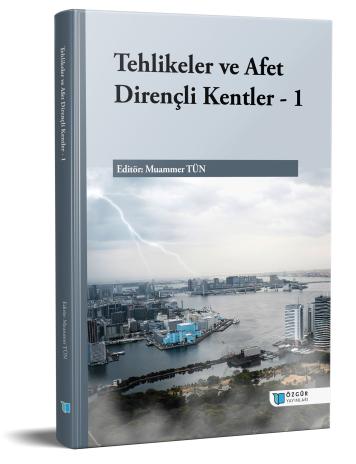
Pioneering Strategies in Disaster Management: Advancements in Earthquake Loss Estimation Systems
Chapter from the book:
Tün,
M.
(ed.)
2024.
Hazards and Disaster Resilient Cities I.
Synopsis
Earthquakes are natural disasters that affect the entire world and cause significant losses. They are inherently unavoidable and unstoppable, causing substantial damage and destruction in a very short period of time. The experience gained, the accumulation of knowledge, and advancements in technology in proportion to the occurrence of earthquakes have led to developments in construction and earthquake engineering, paving the way for significant progress in preparedness, loss prevention, and effective disaster management disciplines. Earthquake Rapid Loss Estimation or Earthquake Loss Estimation Systems are among the most important products of these advancements. These systems, particularly in seismically active regions, take into account all scenarios that could affect the area, informing management units and authorities about the potential consequences of disasters. Thus, necessary preparations can be made, measures can be taken, and an effective disaster management plan can be prepared. Additionally, these systems can operate concurrently with a potential earthquake disaster, predicting the areas affected immediately after an earthquake, facilitating effective disaster and emergency management. Globally, numerous earthquake loss systems have been developed for specific regions or countries. These systems can operate online or manually (in scenario mode) and were developed to predict hazards alone, risks alone, or both hazards and risks. This study has examined the working principles of globally recognized systems such as USGS ShakeMap, PAGER, FEMA HAZUS, GEM OPENQUAKE, AFAD-RED, and REDAS. Next, we used the REDAS software to analyze the February 6, 2023 (Mw7.7) Pazarcık earthquake as a scenario earthquake. The study began with hazard analyses initiated immediately after the earthquake using location and magnitude data, which were later updated with real earthquake data, and the results were presented in a comparative manner, highlighting the importance of obtaining online data for disaster management. Earthquakes are natural disasters that affect the entire world and cause significant losses. They are inherently unavoidable and unstoppable, causing substantial damage and destruction in a very short period of time. The experience gained, the accumulation of knowledge, and advancements in technology in proportion to the occurrence of earthquakes have led to developments in construction and earthquake engineering, paving the way for significant progress in preparedness, loss prevention, and effective disaster management disciplines. Earthquake Rapid Loss Estimation or Earthquake Loss Estimation Systems are among the most important products of these advancements. These systems, particularly in seismically active regions, take into account all scenarios that could affect the area, informing management units and authorities about the potential consequences of disasters. Thus, necessary preparations can be made, measures can be taken, and an effective disaster management plan can be prepared. Additionally, these systems can operate concurrently with a potential earthquake disaster, predicting the areas affected immediately after an earthquake, facilitating effective disaster and emergency management. Globally, numerous earthquake loss estimation systems have been developed for specific regions or countries. These systems can operate online or manually (in scenario mode) and were developed to predict hazards alone, risks alone, or both hazards and risks. This study has examined the working principles of globally recognized systems such as USGS ShakeMap, PAGER, FEMA HAZUS, GEM OPENQUAKE, AFAD-RED, and REDAS. Next, we used the REDAS software to analyze the February 6, 2023 (Mw7.7) Pazarcık earthquake as a scenario earthquake. The study-initiated hazard analyses immediately after the earthquake using location and magnitude data, later updating them with real earthquake data, and presented the results in a comparative manner, underscoring the significance of obtaining online data for disaster management.

